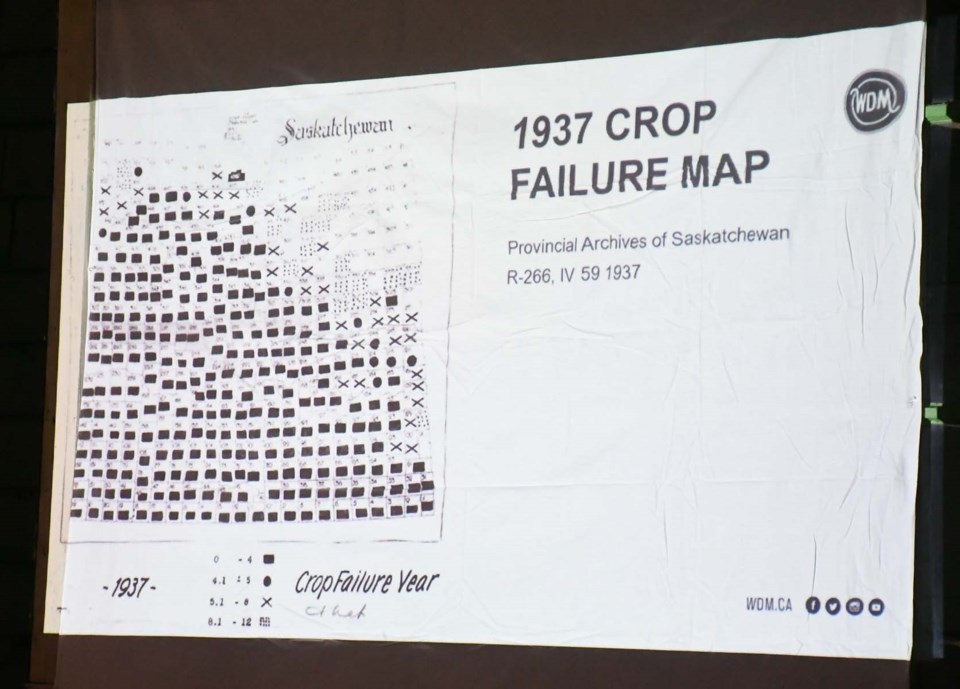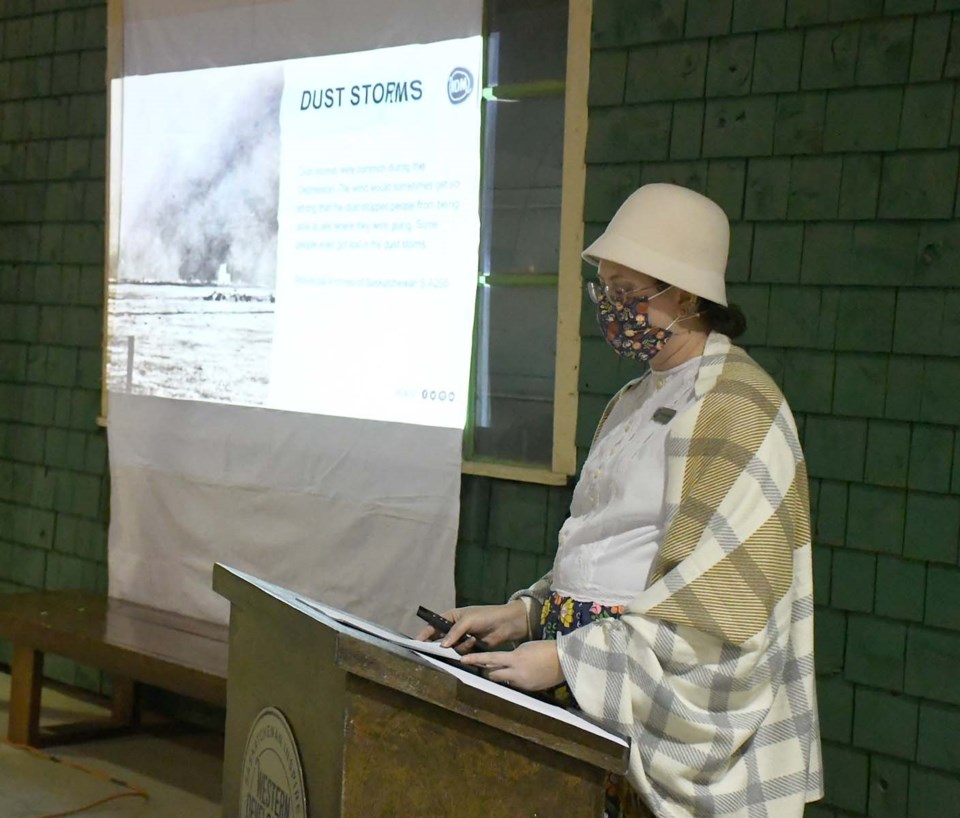It was a time of toil and extreme difficulty, with unbelievably high unemployment, people wondering if the hardships would ever end and the kind of human resiliency rarely seen through history.
And no, we aren’t talking about the spring of 2020 -- but that played a role in the Western Development Museum’s pair of presentations on the Great Depression on Saturday.
Presented by education and public programs coordinator Karla Rasmussen, the first session covered the toys and pastimes of the 1930s, while the second went over how Saskatchewan dealt with and emerged from the Great Depression.
Unsurprisingly, there were a few parallels to the pandemic era of today, something that Rasmussen felt would make for an interesting show-and-tell for museum patrons.
“I've had some people tell me that they actually can relate to this, because of what we've gone through in the pandemic,” Rasmussen said. “There are a lot of challenges we've been through, there's a lot of negativity. But this kind of gives us a bit of hope that if they got through it, if they met these challenges, if they found ways to work together to pitch in, then we can do it too.
“And I think that's a lot of what we're doing today,” she added. “So it kind of gives us that little glimmer of hope knowing people can get through such a hard time as the Great Depression and we can get through this.“
To say Saskatchewan was hit hard in that era would be an understatement. As an example, the horrific drought and soil erosion conditions in 1937 caused almost every crop in the province to fail, an issue that became an annual event for some. And at one point, it was estimated that one in four men in Regina were unemployed.

The hardships are unbelievable in our time, so much so that the science fiction movie Interstellar used footage from the PBS series The Dust Bowl in addition to various events that happened in the 1930s to indicate the planet was failing. Panic-inducing dust storms, placing plates upside down to avoid collecting dust and massive crop failures were all part of the fantastical movie.
But it was real life for folks back then.
“And I think we still see echoes of this today,” Rasmussen said, pointing out that her family places cups upside down in the cupboard. “My kids were wondering why we do that, but my mom always did it and her parents would have lived through the Great Depression. So things like that we don't really notice as much. but it's a habit we've kind of adopted.”
The presentation also touched on the resiliency of our province in those times, as folks found a way to deal with almost everything. Can’t use your car because of shortages? Turn it into a Bennett Buggy or build an Anderson Cart.
Grasshopper plagues destroying what little crops are left? Develop poisons and the means to distribute them efficiently. And, most famously, if your clothes are worn out, just use rough cotton flour sacks to make new stuff -- which reached the point that flour companies would actually print patterns on the sacks to make them more fashionable.
But things got better.
The government started make-work projects that resulted in infrastructure like the Broadway Bridge in Saskatoon, pumping much-needed money into the economy. Agriculture scientists discovered ways to prevent soil erosion, with crested wheatgrass and its extensive root system playing a starring role.
And eventually, the rains did come -- with one humorous anecdote telling of a farmer feeling a drop of rain hit him and fainting out of surprise.
The advancements learned in one of the most difficult times in modern human history are still felt today.
“It’s very interesting how they learned the biology of plants, how to control the soil erosion, where and which plants grew best in our province because of these dry conditions,” Rasmussen said. “And it just kind of blew my mind a little bit to see because this was not that long ago. We’ve come such a far distance since then, with our technology and the things that we know today.

“Then there’s stuff like saving things. Some people recycle gift bags after a special occasion or different types of containers that we'll save to use later, and those are all kinds of things they did back then…They were strong people, they got through this, and we're kind of like the legacy here carrying on little bits of it.”
The two presentations were the first in-person events at the WDM in quite some time and kicked off what will be a steady string of activity in the coming weeks and months.
A seek-and-find about pennyfarthing bicycles is slated for the end of February and into March, while a scavenger hunt featuring the colours of the Saskatchewan flag -- green and yellow, and you can click right here to see how that all came about -- following soon after.
Then there’s the always-popular WDM Coffee Club, which meets once a month to discuss a wide variety of topics. The next session takes place on Tuesday, Feb. 15 with communication as the topic, and the following meet in March will cover Scandinavian immigration to Saskatchewan, touching on settlers who came from that part of the world.
For more information on the coffee club and to sign on for the Zoom link, visit www.wdm.ca/coffeeclub or call Amber at 1-639-398-8484.
And for all the latest news on the WDM, be sure to visit their Facebook page at www.facebook.com/wdm.moosejaw.




